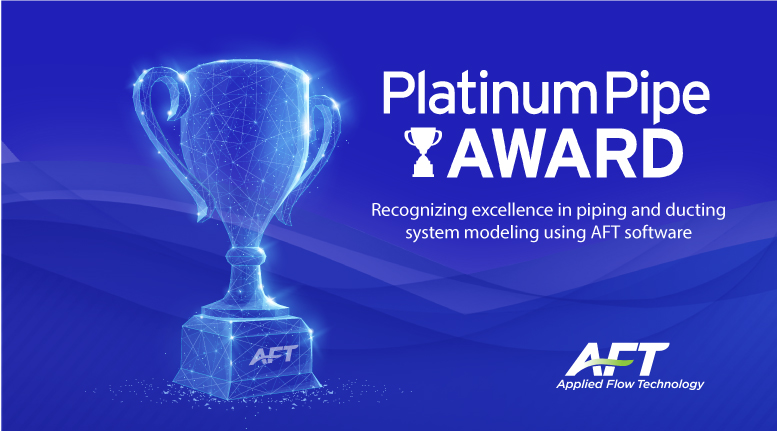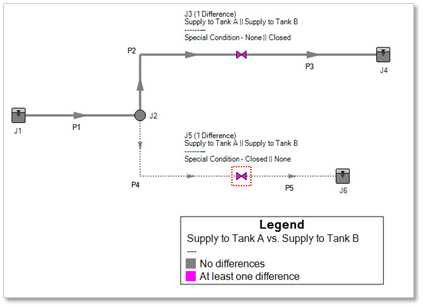AFT Blog
10 New Features in Datacor Pipe Flow Modeling Software in 2025
Released on June 30, 2025, Datacor's latest upgrade delivers powerful enhancements across its Pipe Flow Modeling Software suite—Fathom, Arrow, Impulse, and xStream. Designed to accelerate workflows, improve model accuracy, and provide deeper engineering insight, these new features span everything from smart automation to cross-application integration. View all features and enhancements here, or here's a look at what's new.
1. Parametric Study
Find optimal solutions with smart parametric analysis
Available in: Fathom, Arrow, Impulse, xStream
Unlock smarter decision-making with the new Parametric Study tool. Engineers can now quickly explore how different input combinations affect system performance—identifying trade-offs, sensitivities, and optimal conditions with ease. Create full scenario analyses, visualize trends, and present data-driven results that make a compelling case for design changes or optimizations. Whether improving calibration or simplifying stakeholder reports, Parametric Study brings speed, clarity, and confidence to your modeling.
2. Graph Annotations
Auto-updating graphs—right on your Workspace
Available in: Fathom, Arrow, Impulse, xStream
Visual insight is now front and center. Graph Annotations let you add dynamic, auto-refreshing graphs directly to the Workspace—no need to dig through results tabs. These customizable graphs update automatically with new Output data, giving you instant feedback during analysis. Perfect for monitoring key parameters or comparing performance across designs, this feature turns your Workspace into a more interactive, informative environment.
3. Scenario Comparison Layer
Visualize scenario differences—instantly
Available in: Fathom, Arrow, Impulse, xStream
See what's changed at a glance. The new Scenario Comparison Layer highlights changes between scenarios directly on the Workspace—whether you're comparing to a parent, child, or sibling model. Color-coded differences and detailed inspection options make it easy to spot modifications and understand their impact. It's a fast, intuitive way to analyze design iterations and streamline scenario reviews.
4. Cross-App Heat Exchanger Thermal Link
Model liquid-gas heat exchangers with integrated Fathom and Arrow runs
Available in: Fathom, Arrow
No more manual iteration loops. This powerful new feature allows Fathom and Arrow to work in tandem—solving for thermal balance in liquid-gas heat exchangers automatically. Run both models simultaneously and reach convergence without tedious back-and-forth adjustments. The result? A more accurate, efficient workflow that saves time and minimizes complexity when modeling mixed-fluid systems.
5. Enhanced Heat Exchanger Modeling
More realistic performance across flow conditions
Available in: Fathom, Arrow
Accurately reflect how heat transfer performance changes with flow rate by accounting for variations in the heat exchanger's overall heat transfer coefficient (U). The latest product versions introduce the ability to define a U vs. flow rate curve—providing a straightforward way to model how heat transfer evolves across different operating conditions. Alternatively, engineers can specify a single U value at a particular flow rate, and the software will estimate how U changes based on the exchanger's geometry. This approach delivers a more flexible, realistic representation of flow-dependent thermal behavior, helping users improve model fidelity without requiring extensive data inputs.
6. Smart Sectioning Modes
Balance run time and accuracy—automatically
Available in: Impulse
Set up transient models faster with automatic sectioning that eliminates the need for manual input. Smart Sectioning Modes allow Impulse to determine the ideal number of pipe sections based on accuracy goals—streamlining model setup and reducing the chance of user error. For advanced users who want more control, a specific number of sections can still be defined, and new functionality also allows for a fixed time step to be specified—providing greater precision over timing during calculation and more flexibility in balancing accuracy and run time. This feature simplifies the modeling process while preserving flexibility, making it easier to achieve reliable results with less effort.
7. Force Amplitude vs Frequency Graphs
Frequency domain insights, built right in
Available in: Impulse, xStream
Quickly identify resonance issues and pulsation effects without leaving the software. This new graph type applies FFT processing to Force vs. Time data, creating Force vs. Frequency plots directly in the interface. No need for external tools—just select a Force Set and generate the graph. It's a fast, intuitive way to evaluate dynamic forces and ensure system stability.
8. End Transient Run on Events or Alerts
More control with smart simulation termination
Available in: Impulse, xStream
Simulations can now end based on events—not just time. New options allow runs to stop when a transient condition is met or a Design Alert is triggered. For example, if a pressure threshold is exceeded, the simulation can halt, preserving a checkpoint and providing clear feedback in the Message Manager. This gives engineers more control over run conditions and better tools for debugging and analysis.
9. Faster Scenario Loading & Workspace Refresh
Load complex models up to 90% faster
Available in: All Products
Time is valuable—especially when working with large, complex models. In the 2025 release, scenario switching and Workspace refresh times have been dramatically reduced. Some models now load up to 90% faster, making it easier to iterate, review, and refine designs without delay.
10. Improved PCF Importing
Faster, smarter, and more intuitive file import
Available in: Fathom, Arrow, Impulse, xStream
PCF importing just got an upgrade. Import multiple PCF files at once, automatically handle welded junctions with zero-length connectors, and preview or adjust pipe lengths during import. A new interface even allows you to define pipe materials up front, reducing post-import cleanup. It's a smarter way to bring piping data into your model with accuracy and control.
Ready to Upgrade?
The 2025 release introduces features that simplify, accelerate, and elevate the way engineers build and analyze models across Datacor's Pipe Flow Modeling Software. Whether you're streamlining heat exchanger design, enhancing transient control, or optimizing parametric studies, this update is packed with tools to help you model smarter.






Comments